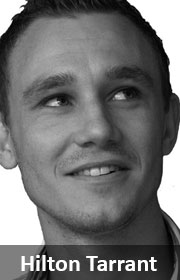 The country’s largest Wi-Fi provider, AlwaysOn, now allows customers to convert airtime into Wi-Fi data for its relatively pervasive network.
The country’s largest Wi-Fi provider, AlwaysOn, now allows customers to convert airtime into Wi-Fi data for its relatively pervasive network.
At the entry level, R15 converts to 150MB of AlwaysOn data, which is less than half the price of mobile data bundles across the mobile networks which typically charge R29 for 100MB.
The price point of R30 for 300MB of data (on AlwaysOn) is very competitive: you’re effectively getting three times as much data for the same price as on the mobile networks.
Both prepaid and contract (post-paid) airtime can be converted into AlwaysOn data, solving an inherent distribution challenge for the Wi-Fi provider: users had to have credit cards and complete a registration and billing/purchasing process. This placed a natural ceiling on people who could use the service.
It’s tried to solve this with prepaid cards available at selected Pick n Pay stores, but the offering of 10GB of data for R199 (with data valid for 60 days) is targeted at the higher end of the market.
There hasn’t been a simple way for consumers to buy data to use on the service. Rather, they’ve hobbled along with the 50MB or 100MB of free allocation per day that AlwaysOn offers. The move to strike deals with networks (except for Telkom at this stage) to allow airtime to be converted to mobile data has precedent. Vodacom, which has an indirect shareholding in WirelessG, launched a way for its customers to convert airtime into G-Connect Wi-Fi bundles in 2014. Effectively, AlwaysOn is offering the same service but across Vodacom, MTN and Cell C. For those who travel on business regularly, the AlwaysOn bundles (as opposed to mobile data) are a no-brainer.
Wi-Fi networks, however, are obviously nowhere near as pervasive as mobile networks. In promotional material, AlwaysOn says it has 2 500 hotspots across the country. It has been growing this network aggressively and has nearly doubled the number of sites over the past three years.
AlwaysOn hotspots are predominantly in urban areas, and owner Internet Solutions has been upgrading sites to help deal with the perception problem of “coffee-shop Wi-Fi” with wildly inconsistent (and often very slow) speeds. It has been building out “super Wi-Fi” hotspots — effectively carrier-grade sites running at “fibre speeds” on (up to) 1Gbit/s connections — and already has over 110 of these across the country, more than half of which are in Gauteng. It inherited a decent footprint when it subsumed MWeb’s nascent Wi-Fi business last year.

These very fast hotspots are situated at major airports, Tsogo Sun properties (hotels and casinos) and at many large shopping malls, such as Sandton City, The Zone @ Rosebank, Greenstone Shopping Centre, Gateway Theatre of Shopping and parts of the V&A Waterfront.
In Johannesburg, it provides free access to residents as part of the city’s free Wi-Fi service. There are two providers (AlwaysOn (AlwaysOn@Joburg_WiFi and the city itself via the COJsmartwifi network) and users get 300MB of free data per day at these hotspots (at schools, libraries, public spaces, community centres and government buildings).
In April, the city disclosed that Wi-Fi usage at its libraries had tripled “over the past few months”. Other major metros including Tshwane, Ekurhuleni, Cape Town and Nelson Mandela Bay (as well as the Western Cape province) have rolled out fairly extensive networks in recent years.
Mobile providers will continue trying to defend the indefensible — the strange 30-day expiry of mobile data bundles — and the #datamustfall “movement” continues to help highlight this punitive pricing. Networks will point to their promotional pricing (such as 100MB of data for one day for R10) as evidence that they are lowering prices and competing. But it is services like these — the AlwaysOn (and G-Connect) ones, along with Telkom’s free bundled Wi-Fi on its network — as well as initiatives by the major metros, that are also helping to drive data prices lower. R149 for 1GB simply cannot hold for much longer.
- Hilton Tarrant works at immedia. This column as first published on Moneyweb and is republished here with permission




